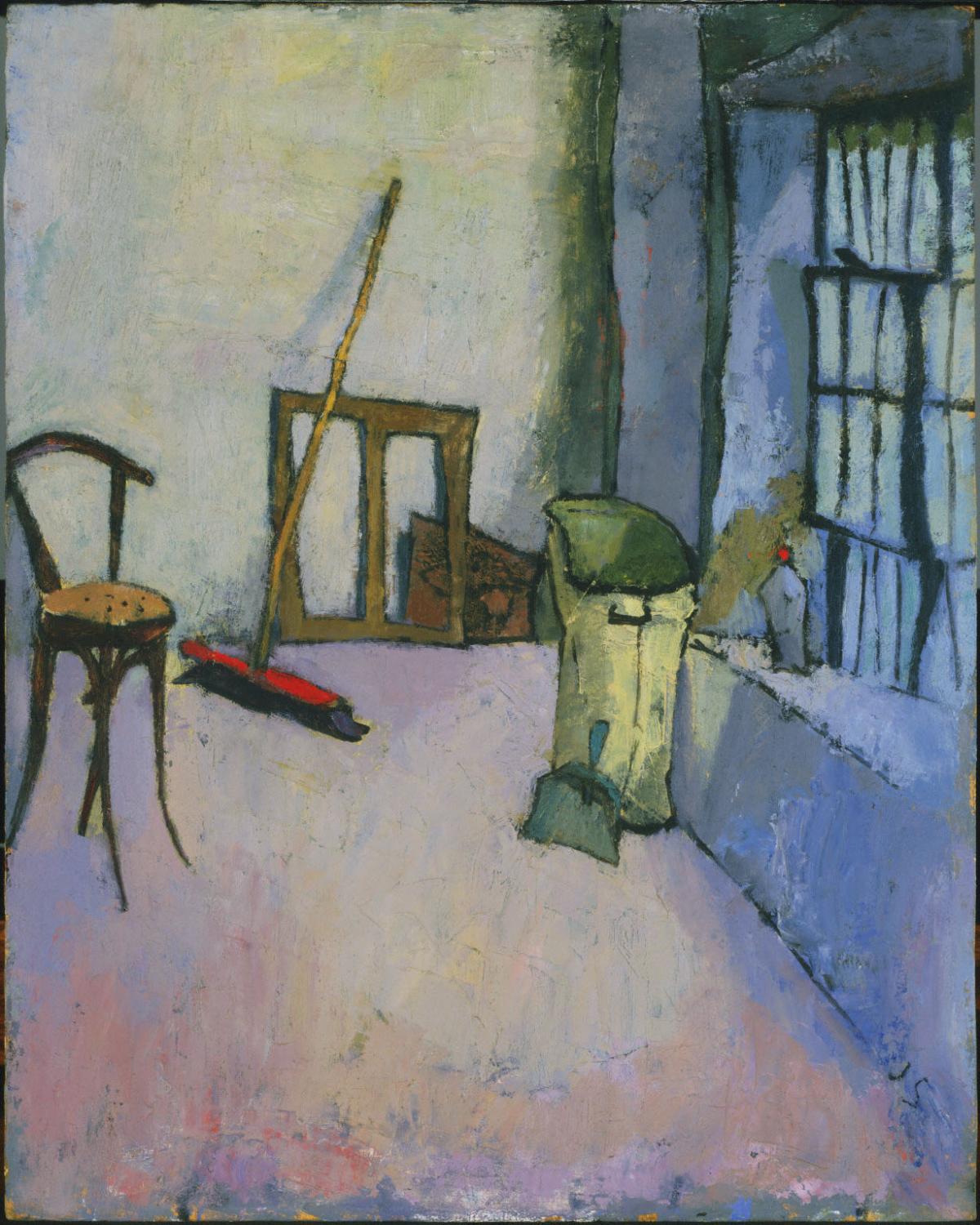The Broom
Joseph Solman ( 1947 )

Joseph Solman, a close friend of Karl Knaths and Milton Avery, helped form The Ten, a group of artists who banded together in 1935 to protest provincial art and champion modern, avant-garde art reforms. These artists opposed the grip that regionalist painters, such as Thomas Hart Benton and Grant Wood, had on the arts community, instead preferring modern European artists such as Pablo Picasso, Chaim Soutine, and Georges Rouault.
Unlike other members of The Ten, who evolved towards abstraction, Solman maintained his romantic-realist approach to modern art. He created most of his work in his basement studio in New York City, where he meditated and painted simultaneously. His paintings employ a rich, colorful palette with bold shapes that are often enclosed by black lines. Most of his still lifes were executed between 1941 and 1950, including The Broom.
The influence of the European modernists like Picasso and Soutine is easily recognizable in The Broom. Solman has distorted the perspective, tilting the floor upward as if the chair and broom will slide out of the picture frame, similar to the still lifes of Cézanne. Solman has reduced spatial depth and flattened the objects, creating dimension instead through his supreme use of color. It is Solman’s color palette that is most striking in this painting and imbues the canvas with vibrancy and life; the warm pinks in the floor compliment the cool greens and blues of the wall.
The Broom was exhibited in 1949 at the Phillips Memorial Gallery, where Duncan Phillips purchased it after the exhibition closed. He proclaimed Solman “a true colorist,” and believed the palette and poetic spirit that characterized the artist’s work were in tune with those of other paintings in his collection. “Your paintings seem quite at home in our Gallery,” Phillips wrote Solman, “and I am sure you feel, as we do, that your work had affinity with many pictures in the Collection.